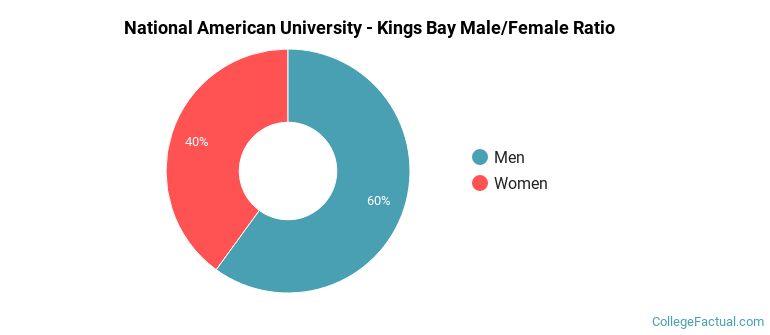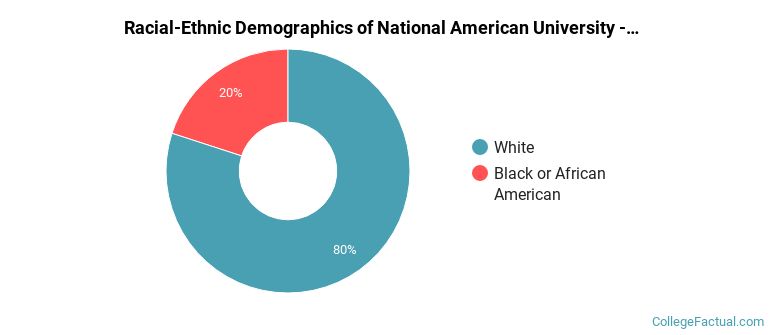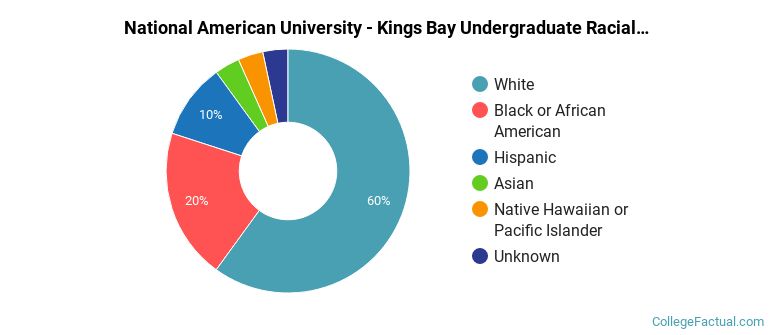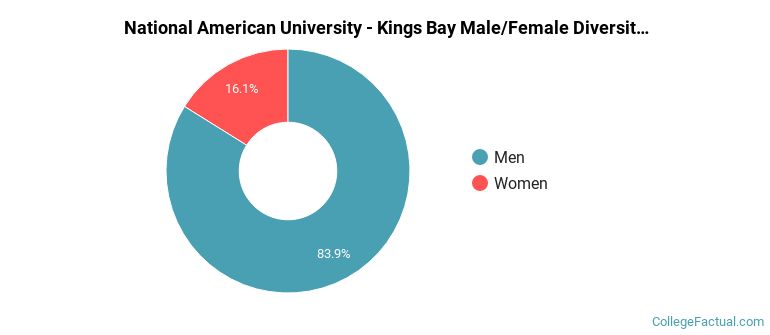 by our College Data Analytics Team
by our College Data Analytics TeamNational American University - Kings Bay total enrollment is approximately 40 students.
Male/Female Breakdown of Undergraduates
The full-time National American University - Kings Bay undergraduate population is made up of 20% women, and 80% men.

For the gender breakdown for all students, go here.
National American University - Kings Bay Racial/Ethnic Breakdown of Undergraduates

| Race/Ethnicity | Number |
|---|---|
| Asian | 1 |
| Black or African American | 1 |
| White | 1 |
| Unknown | 1 |
| Hispanic | 0 |
| Native Hawaiian or Pacific Islander | 0 |
| International | 0 |
| Multi-Ethnic | 0 |
See racial/ethnic breakdown for all students.

| Race/Ethnicity | Number |
|---|---|
| White | 22 |
| Black or African American | 7 |
| Unknown | 4 |
| Hispanic | 3 |
| Multi-Ethnic | 2 |
| Asian | 1 |
| Native Hawaiian or Pacific Islander | 0 |
| International | 0 |

There are approximately 5 female students and 35 male students at National American University - Kings Bay.
Footnotes
*The racial-ethnic minorities count is calculated by taking the total number of students and subtracting white students, international students, and students whose race/ethnicity was unknown. This number is then divided by the total number of students at the school to obtain the racial-ethnic minorities percentage.
References
Department of Homeland Security Citizenship and Immigration Services
Learn more about how College Factual creates their Diversity Rankings.